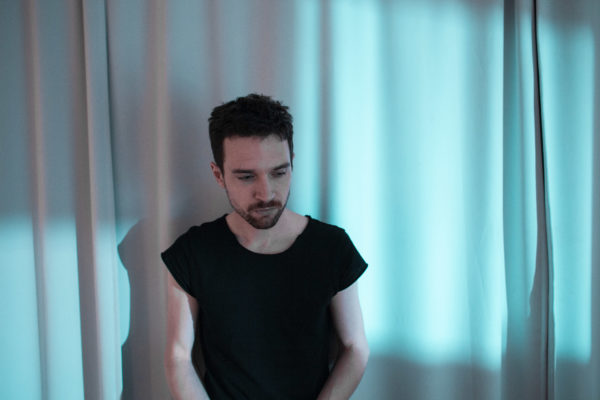Orson Hentschel is a German composer and producer based in Düsseldorf. Having trained in classical piano as of an early age, he now mainly composes electronic, experimental and film music. His debut, Feed The Tape, is strongly influenced by classical minimalism, especially composition methods used by Steve Reich such as phase variations, looping and imitation.
You studied piano. Can you tell us about your musical journey?
My musical journey began with the piano, when I started playing classical music. During my studies I was more interested in impressionism and modern music, so I mostly played Ravel, Debussy and Bartók. After my final examination I closed the piano lid for a longer time. Today I mostly only improvise and record sounds.
In spite of your musical education and classical background, you do not start with a musical idea, but search for a suitable sound material instead. Can you tell us about your process of music-making?
That’s right. I think I spend the same time looking for suitable sound material as the composition process itself. Every week I go to the public library and borrow CD’s and DVD’s to copy to my music archive. This is how I mostly start to compose and put something into a loop. Based on this looping material I hopefully will get new ideas and I begin to improvise. It looks as if I was making a soundtrack for a feature film, because I collect a lot of sound ideas and then, I reduce them. Often I’d kill the beginning loop and something new gets formed that I did not plan beforehand.
Apparently you are interested in polyphonic vocal music from the late middle ages. What fascinates you on this music, what do you think current musicians can learn from it, and how do you recontextualise it to current times? (I guess composers such as Hildegard von Bingen have been rediscovered by contemporary musicians recently.)
I’m not sure why I’m fascinated by this music, maybe I just like the feeling of something sacred when I listen to it. But the term “fascination” is a bit too weighty I think. Primarily I listen to this music to find some special sections to use in my own sound. I don’t listen to this music when I go out for a jog or while I’m travelling. A lot of contemporary musicians work with medieval vocal music but rediscovering and using old things has always been a part of new music generations and art in general. I think the popularity of vocal music was rediscovered by the film industry, where composers used this kind of music to describe something epic or magical. And what can current musicians learn from it? Maybe it’s a good lesson to train your ear for intervals, if you need it – because of the transparent polyphonic vocals.
Your debut Feed The Tape was influenced by the minimalist aesthetic. What in particular fascinates you about it and which techniques have you borrowed from it?
Classical minimalists mostly used the loop as a carrier of slow changing processes and this has always fascinated me – but it’s been already done. In my music, the looping process is just a part of the composition and I use it to put something into context. This can be for example a change of the tonality, a sound surface, the same sample delayed (phase shifting) or trying to imitate the loop with an instrument. The last two techniques are part of Steve Reich’s minimalist music, which I have taken over in my own music.
In your bio, it’s written that you don’t consider yourself a composer of contemporary music but a multimedia artist. Can you elaborate? Can you talk about your multimedia work?
Yes, for me the music and the visual concept belong together. During the composition process, I always try to imagine how my music works live with the visuals. My current live show is a combination of a projection, a self-built LED light system in the background and a lot of fog. My aim was to find a way to increase the energy of my music. For the visuals I’ve decided to restrict myself to abstract material like light sources, light refraction or dust particles. These elements are synchronised to the music like the analogue light as well. It’s an interplay of various media.
One of your pieces is called Noise of the Light. It is a nice concept. Can you describe it?
Thanks! When I write a music piece, I often try to pick out a marked element and focus on it. In Noise of the Light there are these high frequency sinus tones, which are processed into wild drum sequences. During the composition process I immediately had the visual image of flickering lights in my head, so I decided to make a music video for that piece.
What are you working on at the moment?
I’m currently working on my second album and I’m collecting some visual concepts for the live show. But it’s still too early to talk about it. Hopefully the new works will be ready by the end of the year. In addition, I’m also writing the music for a dance performance piece which will be premiered in Düsseldorf in November.
